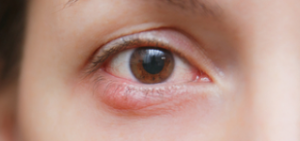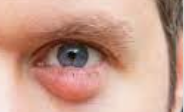Over 1.2 million people have undergone eyelid surgery, it’s the fifth most common eye surgery procedure worldwide.
Droopy eyelids can impair both your vision and your appearance. Luckily, if your eyelids sag due to aging, a medical condition, genetics, or other factors, there are a range of successful options.
Many individuals choose blepharoplasty, eyelid surgery, to improve the appearance and function of their eyelids so they can look and feel better.
What is blepharoplasty?
Blepharoplasty is a surgical procedure that improves the appearance of “puffy eyes” or bagginess in the lower or upper eyelids.
The surgery is usually done for cosmetic reasons and seeks to improve the facial appearance, especially around the eyes and the eyelids.
Blepharoplasty, on the other hand, can also help individuals whose droopy upper eyelids are interfering with their eyesight.
Eyelid surgery may be appropriate for patients with floppy eyelid syndrome (FES) or medical disorders that cause FES.
Facial wrinkles, crow’s feet, and dark circles under the eyes are not usually addressed with blepharoplasty or eyelid surgery.
How is eyelid surgery performed?
The surgery will usually be performed as an outpatient procedure, usually in a hospital setting and by an oculoplastic surgeon.
Your doctor will give you medicines and local anesthetic before the surgery. During the operation, incision lines will be used to cover any surgical scars and will blend in with the natural features of your eyelid.
In most situations, the oculoplastic surgeon will use the incision in your upper eyelid to remove or reposition fat deposits, tighten muscles, and/or remove superfluous skin.
The lower eyelid incision is hidden just below the lower lashes, resulting in surgical scarring that is practically undetectable. Sutures or skin glue are used to close most incisions, and they can be removed after a week.
To minimize discoloration of the lower eyelids, some surgeons may use a laser or chemical peel.
Contact an eye doctor near you, to find out more about eyelid surgery.
SEE RELATED: Do I have Floppy Eyelids?
Who’s a candidate for blepharoplasty?
Adults that are generally in good health who have realistic expectations of the surgery are ideal candidates.
Candidates for blepharoplasty are typically over 35 years old, non-smokers, and do not have any major eye diseases.
If you smoke, your eye doctor will discuss the following measures with you because smoking reduces blood flow to surgical sites, and may affect your recovery from eyelid surgery and other oculoplastic procedures.
What to expect following eyelid surgery
Your eyes will be covered with gauze for a brief time in the doctor’s office after the surgery. Cold compresses or lubricating ointments may be recommended by your eye doctor to aid healing.
During recuperation, your eyes may appear puffy, bruised, or irritated, but they will quickly return to normal, revealing a smoother, more well-defined, youthful, and rejuvenated appearance.
Following the blepharoplasty, your eye doctor will give you instructions on how to care for your eyes and what medications to take.
You’ll be able to witness the procedure’s complete result in 6 weeks.
Upper eyelid surgery can last for years, however lower eyelid surgery may need to be done more frequently. The outcome depends on the patient’s age at the time of surgery.
Possible complications of eyelid surgery
While, complications are very rare, they can occur following eyelid surgery:
- Infection
- Eye pain
- Dry eyes
- Loss of vision (rare)
- Bleeding from the incisions
- Eyelid skin that folds in or out
- A pulled-down lower lid lash line
- An abnormal coloring of the eyelids
- The inability to close the eyelids completely
Some complications and side effects go away within a week of surgery, while others may take a few weeks. Swelling and bruising can take up to two weeks to go away.
Whether you’re contemplating it for cosmetic or medical reasons an eye doctor can assess your eyes to see if blepharoplasty is appropriate for you.
Setting up an appointment with an eye doctor will allow you to get answers to any concerns you may have regarding the operation, providing you more confidence and information about your decision.
LEARN MORE: Guide to Eye Conditions
Schedule a consultation with an eye doctor near you to find out if eyelid surgery is best for you.
Droopy eyelids or ‘puffy eyes’ can impair both your vision and your appearance, there are a range of successful options that could change your vision and your quality of life.









